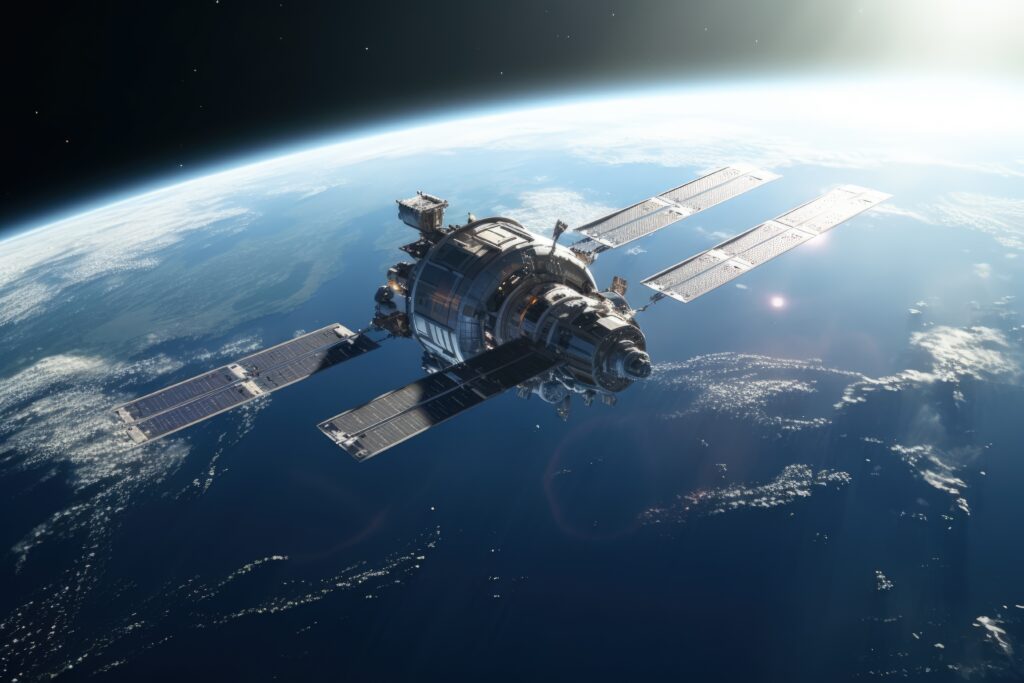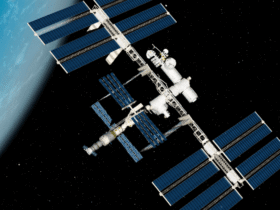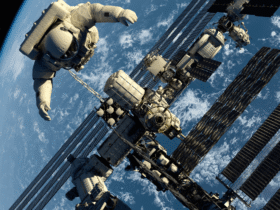The International Space Station (ISS) is not just a laboratory floating in space. It is a living symbol of mankind’s collective dreams, cooperation and indomitable curiosity. It orbits our planet at a speed of about 28,000 kilometers per hour, about 400 kilometers above the Earth’s surface. This amazing structure is the permanent address of man in space and a unique platform for the advancement of science and technology.

International Space Station: A piece of Earth in the sky
The station is the largest and most complex international project in human history. It was built and operated by five space agencies—the United States (NASA), Russia (Roscosmos), Europe (ESA), Japan (JAXA) and Canada (CSA). The first module was launched into space in 1998 and has been continuously manned since 2000.
Wonderful structure of construction
The International Space Station was not built on Earth and sent to space at once. Its various parts or ‘modules‘ have been built on Earth step by step and sent to space through space shuttles and rockets. The astronauts then performed a spacewalk, or floating in space, connecting the parts to each other.
It took more than a decade to build this huge structure, equivalent to a football field. This includes laboratories, living spaces, solar panels, robotic arms and all the necessary facilities for living. This station is so big that even if the sky of the earth is clear, it can be seen moving like a bright star with the naked eye.
Life in space is a different experience
The lives of astronauts on the International Space Station are very different from those on Earth. Since the force of gravity is almost zero, they have to stay afloat at all times. Food, sleep, work—everything has to be done in this floating state.
- Daily work: Astronauts work about 10-12 hours per day. This includes conducting scientific experiments, station maintenance, and physical exercise.
- Food: Their food is specially processed so that it can be easily eaten in space. Special straws have to be used for drinking liquid in floating condition.
- Sleep: Astronauts sleep in a sleeping bag so that they do not drift to and fro during sleep.
- Exercise: It is mandatory to exercise at least two hours a day to prevent muscle and bone loss in the absence of gravity. For this, there are special treadmills and other equipment.
- Entertainment: During the mission, astronauts read books, listen to music, watch movies, and spend time looking at the Earth. Through a special window named ‘Kapola’ they enjoy the wonderful view of the world and take pictures. They also keep in touch with their families around the world through internet connections.

The new world of science
The International Space Station is a state-of-the-art space laboratory. There are many experiments that are not possible in the world. Many new aspects of physics, chemistry and biology are revealed in a gravityless environment.
- Human body study: The study of how the human body changes as a result of long-term stay in space. This research is very important for the survival of humans in future missions to Mars or farther.
- New drug discovery: Protein crystals can be made well in space, which helps in the development of new drugs for various diseases like AIDS, cancer or Parkinson’s disease on Earth.
- Climate change monitoring: From the station, the Earth’s climate, weather and environment are monitored. It helps us to understand the world better.
- Physics: The study of how fire or liquids behave in a non-gravity environment is used to develop new technologies on Earth.
A space station for all
Many people may think, what is the relationship of the general public with this huge cost and activity of the space station? In fact, the benefits of its research are being enjoyed by almost every person in the world in one way or another.
- Advances in the field of medicine: Many advances have been made in medical science through research conducted in space. Such as artificial limbs, advanced ultrasound technology, etc.
- Clean drinking water: The advanced filter technology used for water recycling on the space station is being used to solve the problem of clean drinking water in many remote areas of the world.
- Smartphones and GPS: Space research has indirectly contributed to the improvement of many things, from the camera sensor of the smartphone in your hand to GPS technology.
The International Space Station is not the property of one country, it is the property of all mankind. It reminds us that when we work shoulder to shoulder, the impossible can be made possible.

Frequently Asked Questions (FAQs)
Question 1: How much did it cost to build the International Space Station?
Answer: The total cost of its construction and operation is more than 100 billion US dollars, making it the most expensive single object in human history.
Question 2: Is the International Space Station visible from Earth?
Answer: Yes, it is possible to see it with the naked eye if the sky is clear. It looks like a bright, fast-moving star in the morning sky just before sunrise or just after sunset in the evening sky. Its exact location and viewing time can be known through various websites and apps.
Question 3: How long do astronauts stay on the station?
Answer: Astronauts usually stay on the International Space Station for about six months during a mission.
Question 4: What is the future of the space station?
Answer: The station is currently planned to be operational until 2030. It can then be slowly lowered to Earth and destroyed in a specific area of the Pacific Ocean. However, in the meantime, various commercial space stations may be built.
Question 5: How is waste material disposed of in space?
Answer: Solid waste is deposited in a special cargo spacecraft, which is then burned to ashes when it enters the Earth’s atmosphere. Urine and sweat are filtered through an advanced processing system to be converted into pure drinking water.
Conclusion
The International Space Station is not only a great achievement of science and technology, it is also a shining example of the limitless possibilities of man beyond the boundaries of the earth. This floating house in the sky will inspire our generation and future generations to explore space.
.

Hi, I’m M Saif, a digital marketer with a strong focus on SEO and content writing. I help businesses improve their online visibility, drive organic traffic, and create engaging content that converts. With a results-driven approach, I work on strategies that not only boost rankings but also deliver real value to audiences.











Leave a Reply